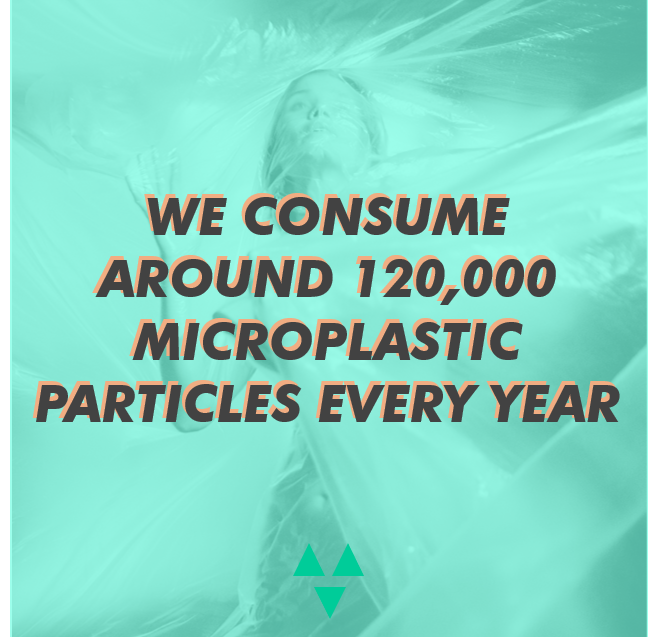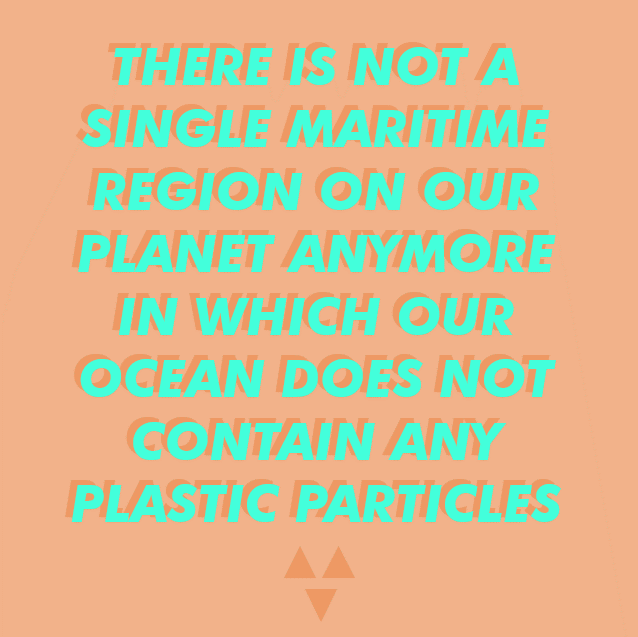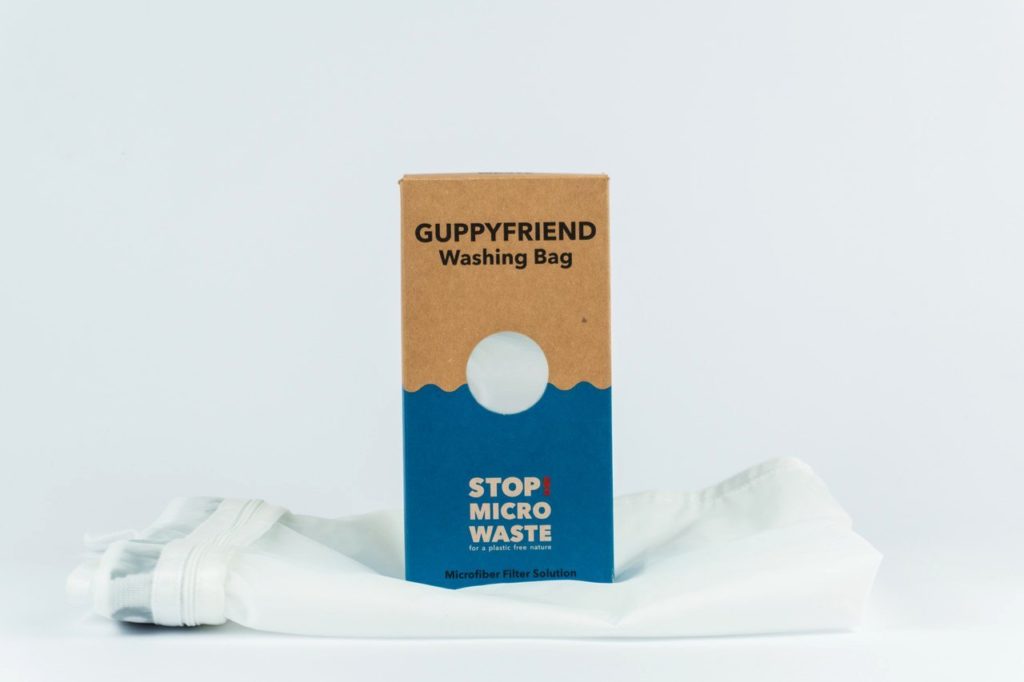There is no doubt that microplastic is already present in most of our planet’s organisms. We, humans, consume around 120,000 microplastic particles every year. The problem is 100% self-made by us and started around 160 years ago with the invention of plastic in 1862. The effects that we can see by now, that the unconscious usage of plastic has on our environment, has not yet led to a widely spread feeling of responsibility though. Concrete impact on marine wildlife are already visible – the effects on human health are yet undiscovered.
Let’s have a look at the status quo of the “situation”, effects of microplastic on living organisms and what we can do to fight the issues that we face.
The microplastic “situation”

What is particularly concerning is what we don’t know yet. Every week there are new scandals popping up, picturing the extent of where microplastic shows up in our day to day life.
The latest scandal arose in the beverage industry: This study from the US showed that whenever you drink tea from those triangle-shaped nylon tea bags, you consume billions of plastic particles that get released when you pour hot water on the teabag.
Knowing this, it sounds quite harmless that researchers expect that we are consuming around 52,000 plastic particles with food and beverages each year – 120,000 particles including the particles from the air that we inhale.
The effects of microplastic on organisms
There are no studies yet on the effect that the consumption of microplastic has on our health. Therefore it is hard to make conclusions on the effects of microplastic. What we already know is that nano plastic – smaller particles that develop from microplastic in a further stage – are able to travel through cell walls. You don’t need to be a scientist to understand that this might impact the way our cells develop.

What is also known, is the impact that microplastic has on other organisms on our planet – for instance, fish and other marine inhabitants. The marine wildlife is massively dying. And yes overfishing is taking its part, but it is proven that marine organisms mistake pieces of plastic for their natural food, which leads to misfunctions of their organs, diminishes hunger, which unpreventably leads to death.
And the ugly truth is that there is not a single maritime region on our planet anymore in which our ocean does not contain any plastic particles. Currents and winds are transporting the microplastic to all over the world. Take a look at the arctic – where barely any humans live. The concentration of plastic particles in probes that have been taken from seawater and ice are scaring.
But where is the microplastic coming from?
The ocean itself has a high impact on the creation of microplastic. Waves and currents break down plastic items into small pieces – the microplastic particles. You ask yourself how the plastic is ending up in the ocean? It is because humans are stupid and profit-driven. Around 8 million tons of plastic get just dumped in the ocean every year. Winds on land transport the other 4 million that got left behind in nature into our seas.
There are many many other unfortunate ways how plastic ends up in our ocean. Stupefying cases like inadequate filters while washing plastic garbage in recycling factories for example.
One example that the majority of people don’t know, is that with every use of the washing machine, 17 million microplastic particles are getting released from your polyester sweater or pants. And this unfortunately also happens when you wash your WONDA bikini (it is made from recycled plastic, but it is still plastic). The filters from the washing machine are not (hopefully just yet) able to filter out all the particles. But there is hope and action at the silver lining: A German retailer/ manufacturer called Langbrett has invented a revolutionary washing bad that is capable of filtering these plastic particles. Check their page, to find out more.

GUPPYFRIEND Washing Bag
The first scientifically approved solution to prevent microfibers from entering into rivers and oceans during the washing process.
What can we do about it?
There is not an adequate solution yet that builds on removing microplastic from the ocean (although there are a lot of competitions open to solve the problem, including some space institutions). From our perspective, we should also not focus on getting out what has already been released, but work heavily on not creating more threats. Otherwise, we are will always run behind the problem, but will never be able to really solve it.
This particularly means: REDUCE, REDUCE, REDUCE!
Single-use plastic simply doesn’t make sense. Economically and ecologically the use of single-use plastic is nothing but stupid. Yes, there might be some advantages that relate to hygienes that plastic has compared to other materials, but in fact, the use of single-use plastic is just a way to get products at hand the most convenient possible. By refusing products that make include plastic in their life cycles and companies and brands that make use of plastic in their value chains, the demand will eventually regulate the market offer.
And for those companies out there that would mean: Get your lazy asses (sorry for my English) up and put a little bit of effort into sustaining our planet in a way that makes it still enjoyable for our kids! There are sufficient alternatives on the market that we can already make use of.
Tips on how to reduce the amount of microplastic that we consume
Although we don’t know the impact of the consumption of microplastic yet, you are well-advised to minimize the exposure just in case that it has a similar effect on us as on fish. Here you have some tips on how to reduce the consumption of plastic particles:
- Drink water from the tap! This might sound surprising in the first place, but bottled water was found to contain approx. double the amount of plastic particles than tab water.
- Never heat up food in plastic containers! The heating process releases chemicals into your food.
- Containers with the recycling codes 3, 6 and 7 should be avoided as they are proven to contain concerning substances.
- Keep your house clean! Sounds irrelevant, right? But as already mentioned, we are exposed by microplastic just by breathing the air. The more “dusty” it is, the higher is the exposure! Result: cleaning helps!
- Eat more fresh, non-packed food! This is the most obvious one. However, and to be 100% honest with you, this is just an assumption as the microplastic exposure via fresh food has not yet been tested.
Hopefully, this post gave you a little overview of the microplastic status quo! One last comment from my side: There is no reason to panic, but definitely enough reasons to not continue the way we do! Let’s face reality (even if it’s just your own)!
Sources
https://pubs.acs.org/doi/abs/10.1021/acs.est.9b02540
https://www.consumerreports.org/food/how-to-eat-less-plastic-microplastics-in-food-water/
